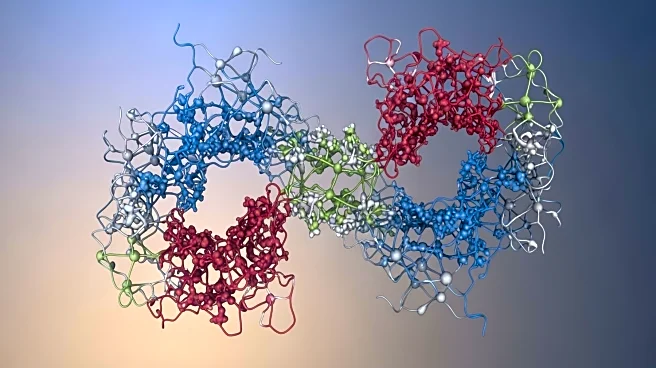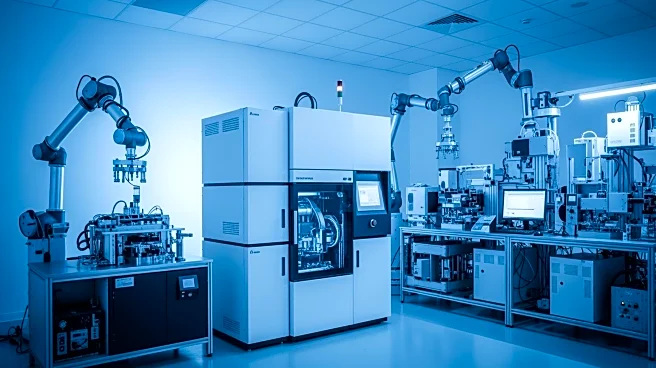What's Happening?
Researchers have developed a new model integrating machine learning and protein-ligand interaction profiling to discover inhibitors for METTL3, a protein implicated in various diseases. By combining datasets
and utilizing advanced computational techniques, the study aims to enhance the prediction of bioactivity for potential inhibitors. The model's development involved analyzing chemical spaces and incorporating protein-ligand interaction features, resulting in improved predictive accuracy and robustness.
Why It's Important?
The integration of machine learning in drug discovery represents a significant advancement in the field of biotechnology. This approach could accelerate the development of new therapeutics, particularly for diseases where METTL3 plays a critical role. The ability to predict bioactivity with greater accuracy can lead to more efficient drug development processes, potentially reducing costs and time to market. This innovation may benefit pharmaceutical companies and healthcare providers by providing new avenues for treatment options.
What's Next?
Future research may focus on further refining the model and exploring its application to other proteins and diseases. The success of this approach could encourage broader adoption of machine learning techniques in drug discovery, prompting collaborations between tech companies and pharmaceutical firms. Additionally, regulatory bodies might need to consider new guidelines for evaluating AI-driven drug development processes.











